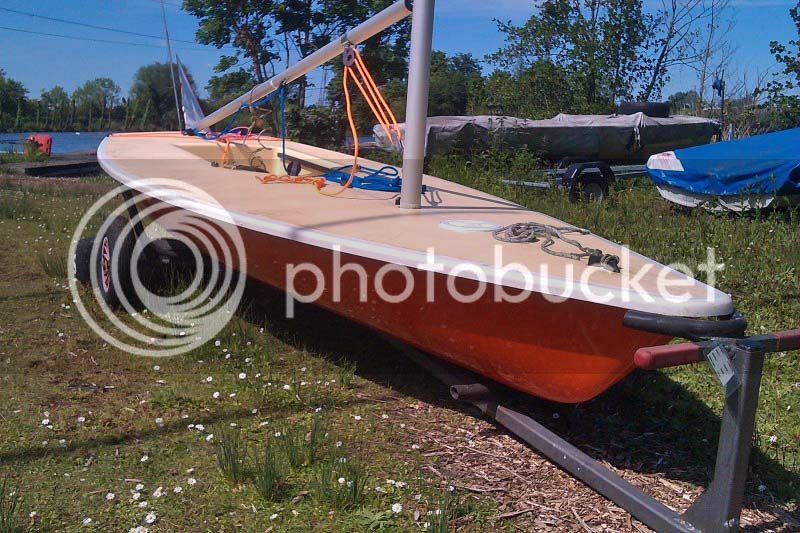Having just repaired the hull / deck joint on my laser over about a 1m plus length where it hangs on the trolley, I'm wondering if the repair will hold.
Lots of good advice on here about how to do the job and I used a West Epoxy kit. Its just that getting it nice and clean inside the joint was a devil of a job, especially towards the ends of the split where I couldn't prise it open very far. The spilt was actually longer than I first thought and I ended up using the whole bottle of epoxy as the old filler was quite thick and left a large gap to fill once I'd chipped it off. It was quite difficult to judge how tight to clamp it afterwards as it kept squeezing the epoxy back out at the centre. With hind sight I'd have bought a bigger pot and kept on feeding it in.
Being a pessimist I'm already planning what to do if the repair doesn't hold and wondered if anyone had tried through bolting the joint. I was thinking of maybe 3 or 4 round headed machine screws with a washer each side at about 150mm centres along the worst bit of the joint.
We always sail in a wetsuit so unlikely to worry about getting jabbed.
Any thoughts?
Lots of good advice on here about how to do the job and I used a West Epoxy kit. Its just that getting it nice and clean inside the joint was a devil of a job, especially towards the ends of the split where I couldn't prise it open very far. The spilt was actually longer than I first thought and I ended up using the whole bottle of epoxy as the old filler was quite thick and left a large gap to fill once I'd chipped it off. It was quite difficult to judge how tight to clamp it afterwards as it kept squeezing the epoxy back out at the centre. With hind sight I'd have bought a bigger pot and kept on feeding it in.
Being a pessimist I'm already planning what to do if the repair doesn't hold and wondered if anyone had tried through bolting the joint. I was thinking of maybe 3 or 4 round headed machine screws with a washer each side at about 150mm centres along the worst bit of the joint.
We always sail in a wetsuit so unlikely to worry about getting jabbed.
Any thoughts?

